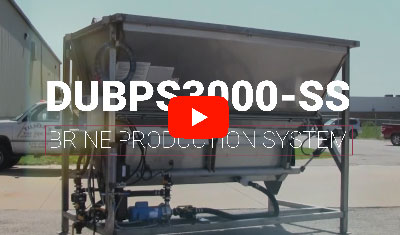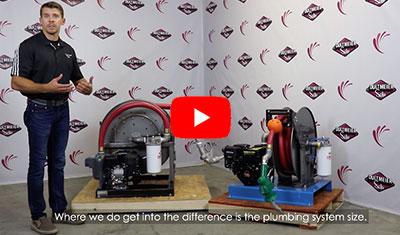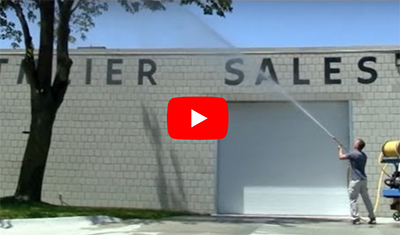
When it comes to power washing concrete, not all nozzles are created equal. Concrete surfaces—whether driveways, sidewalks, or warehouse floors—require high-impact cleaning to lift deep-set grime, oil, algae, or efflorescence. But using the wrong nozzle can lead to uneven cleaning, wasted time, or even surface damage. So, what nozzle should you use for power washing concrete?
If you’re tackling concrete—whether it’s driveways, sidewalks, or patios—the best choice is a rotating (turbo) nozzle. These nozzles deliver the powerful, concentrated impact of a 0° tip but with the efficiency of a spinning, fan-like spray pattern. There are some factors to consider when selecting a nozzle for concrete, such as the size of the tip, as well as the specific type of concrete surface you need to clean.
In this guide, we will walk through the different types of nozzles and when to use them. (For information on all high-pressure nozzle types, read this guide.)
The Best Pressure Washer Nozzle Options for Concrete
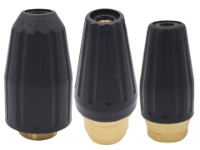
As we mentioned, for most concrete surfaces, the best nozzle you can use is a rotating (turbo) nozzle—and here’s why. Unlike standard spray tips that produce a fixed spray pattern, turbo nozzles harness the cutting power of a 0° solid stream tip and add a spinning action that rapidly rotates the jet in a circular pattern. This creates a high-impact, cone-shaped blast that delivers deep cleaning power over a wider area—making them especially effective for lifting grime, oil, algae, and embedded debris from rough concrete textures.
Rotating Turbo Nozzle Demo Video:
The rotating action doesn’t just clean more thoroughly—it also helps prevent damage. Because the 0° stream is constantly moving, it doesn’t stay fixed in one spot long enough to etch or gouge the surface. This makes turbo nozzles ideal for cleaning driveways, sidewalks, loading docks, and even concrete walls, offering a balance of intensity and coverage that other nozzle types simply can’t match. They're also highly efficient—cutting cleaning times significantly compared to flat or fan-style tips.
How Does a Turbo Nozzle Work?
When water enters a turbo nozzle, it’s under very high pressure—usually anywhere from 2,000 to 5,000 PSI. This powerful stream is forced through a very small hole (called an orifice), which focuses it into a tight, needle-like jet. At this stage, the water jet is incredibly strong, just like what you’d get from a standard 0° red-tip nozzle. However, that intense stream alone would only clean in a tiny spot. That’s where the magic of a turbo nozzle begins.
Inside the nozzle, that narrow water jet hits a spinning piece—called a rotor or impeller—at an angle. As the jet strikes it, the rotor begins to spin rapidly, thousands of times per minute. This makes the straight water stream rotate in a circular pattern, like it’s sweeping across the surface in tiny, fast circles. The result? You get the cleaning power of a pinpoint jet, but it covers a much wider area like a fan spray. It’s an efficient and aggressive cleaning action that’s ideal for blasting tough grime off concrete without leaving streaks or gouges
Types of Nozzles for Concrete Power Washing
While turbo nozzles are often the top choice for cleaning concrete, they’re not the only option. Other nozzle types offer unique spray patterns and flow characteristics that can be better suited for specific tasks or surface conditions. Let’s take a closer look at the main nozzle types used for concrete cleaning and what sets each one apart.
1. Rotating / Turbo Nozzles
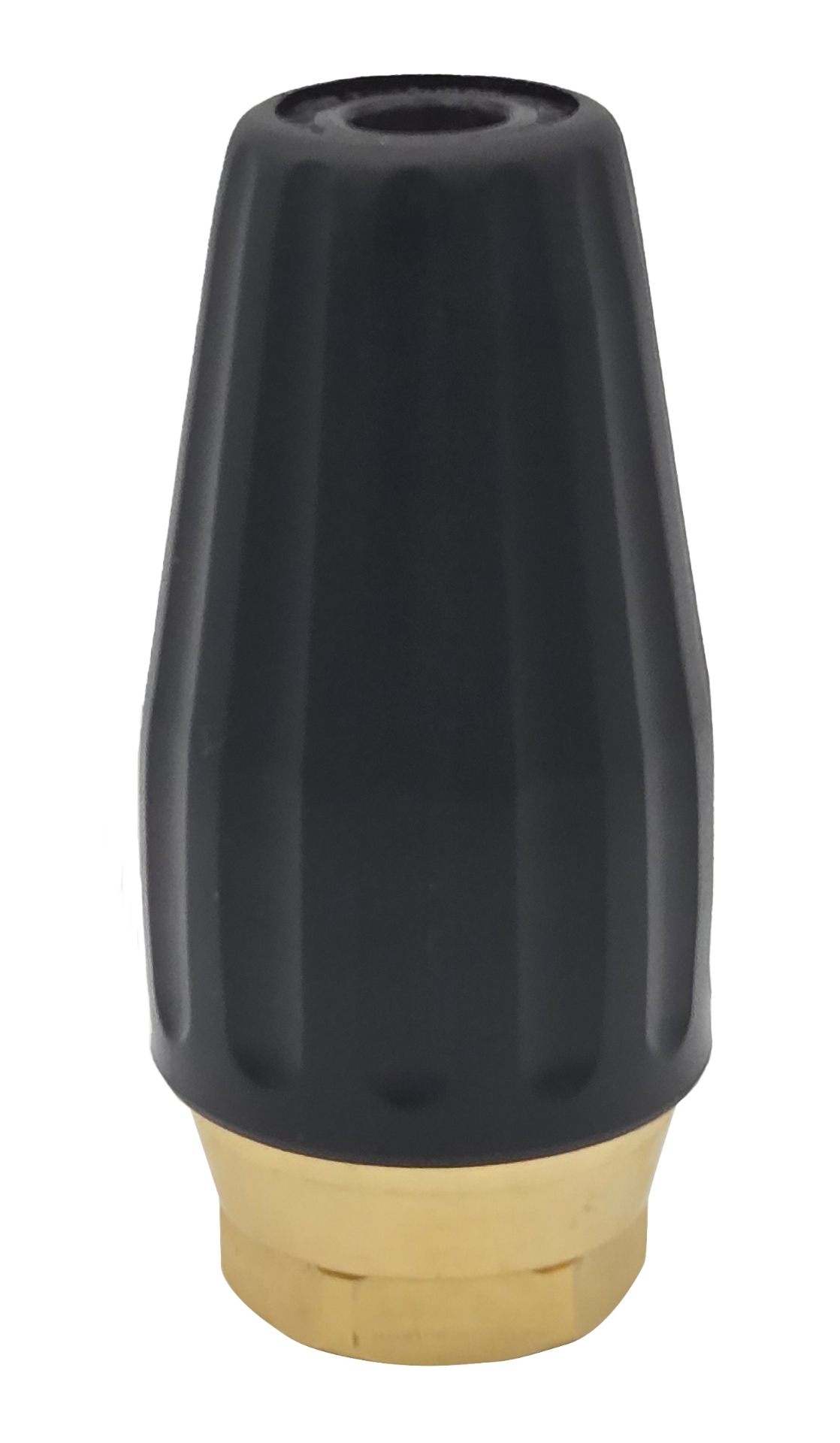
Spray Pattern: Produces a zero-degree high-pressure stream that rotates into a rotating cone spray, dramatically improving cleaning efficiency.
When to Use: Ideal for heavy-duty concrete cleaning like driveways, parking lots, sidewalks, loading docks, and patio pavers. Especially effective for removing gum, oil stains, moss, and grime.
Examples:
2. Quick-Connect Spray Nozzles
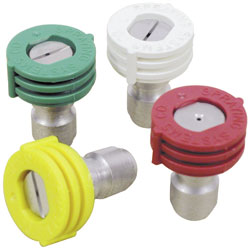
Spray Pattern: Flexible and easy to swap, these nozzles offer different spray angles and orifice sizes depending on the job. While not as aggressive as turbo tips, the quick-coupler design is handy for swapping tips. Fits standard pressure washer female quick-couplers.
When to Use: Great for medium-duty cleaning of stamped concrete, decorative surfaces, or areas near landscaping where a turbo nozzle may be too aggressive. Also useful for rinsing and general-purpose cleaning.
Examples:
3. WashJet Spray Nozzles (MEG, WEG, IMEG, HVSS)
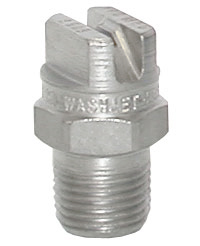
Spray Pattern: Designed for high-volume, consistent spray performance. They come in a variety of spray angle options and produce a flat fan.
When to Use: These nozzles are ideal for surface cleaners or walk-behind units, offering even coverage across broader areas—excellent for commercial or large-scale concrete floor cleaning.
Examples:
Key Factors to Consider When Choosing a Nozzle for Concrete
Choosing the right nozzle for cleaning concrete isn’t just about brute force — it’s about matching spray angle, orifice size, flow rate (GPM), and pressure (PSI) to the surface you’re cleaning and the results you want.
Use tools like the Pressure Washer Nozzle Color Chart to understand how number, color, and tip angle relate to cleaning power and surface impact. Then combine that knowledge with the Pressure Washer Nozzle Size Calculator to find the orifice size that matches your washer’s flow (GPM) and pressure (PSI).
Here are the key factors to consider:
| Factor | Why It Matters |
|---|---|
| Pressure (PSI) & Flow Rate (GPM) | Concrete removal requires enough power. Too little, and stains stay; too much, and you risk damage. Use the size calculator to get a recommended orifice size. |
| Orifice Size | The orifice controls how much water flows. The wrong size causes inefficiency, damage, or ineffective cleaning. Read what happens if a nozzle is the wrong size. |
| Spray Pattern / Angle | A narrow pattern (0° or turbo) gives cutting power; wider angles (15°, 25°, 40°) cover more surface gently. Use charts (angle, color) to see what matches your job. |
| Surface Type & Condition | Smooth concrete vs. stamped, new concrete vs. old or sealed surfaces — each has a different tolerance. Rough or decorative concrete may require gentler angles or lower PSI. |
| Durability / Material | Nozzle materials like ceramic or hardened steel resist wear. If you do high-PSI work often, get a robust turbo or rotary nozzle that can take abuse. |
Do Different Types of Concrete Surfaces Impact Nozzle Choice?
Yes—surface texture and condition can influence your selection:
Smooth concrete (driveways, patios): A turbo nozzle works well—powerful enough to clean efficiently, but less likely to etch or damage.
Rough or porous surfaces (brick, stamped concrete): You may need a higher flow or solid stream nozzle to penetrate grooves.
Aged or sealed surfaces: Lowering pressure will help avoid lifting sealers or peeling surface layers.
In most cases, the rotative power of a turbo nozzle—and its ability to deliver high impact with wide sweep—makes it a versatile and safe choice when used responsibly.
Final Takeaway
For power washing concrete, start with a rotating (turbo) nozzle for maximum effectiveness. Match it to your washer’s PSI/GPM, use appropriate motion technique, and switch to quick-connect tips if you need to shift to gentler cleaning for nearby surfaces. Ready to make your concrete gleam? Explore our Turbo Nozzle selection online or call one of our experts to find the best one for your job.

